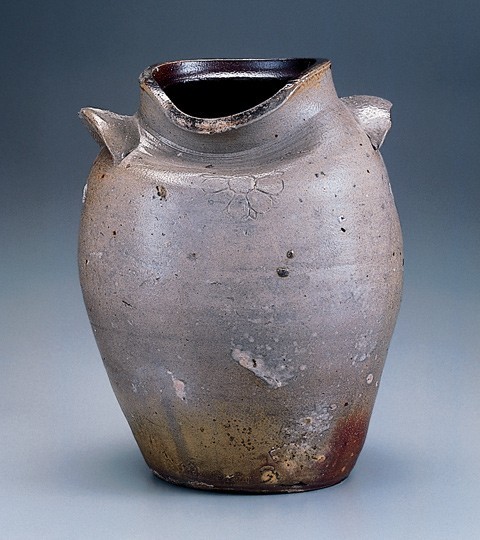
Jar, William Pecker, West Amesbury, Massachusetts, 1790–1810. Salt-glazed stoneware. H. 12 1/4". (All photographs, Gavin Ashworth.)
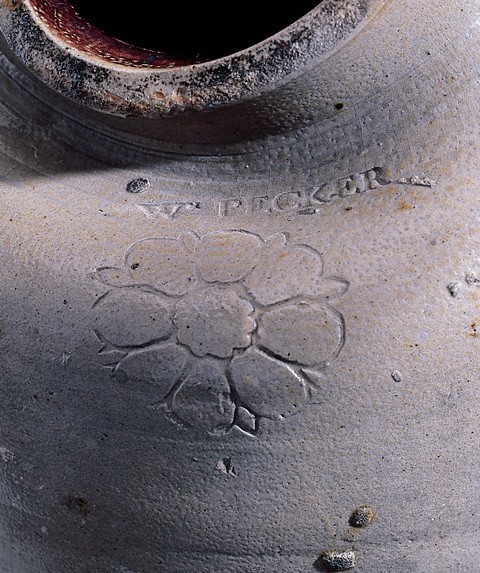
Detailed of the stamped flower and “WM PECKER” on the jar illustrated in fig. 1.
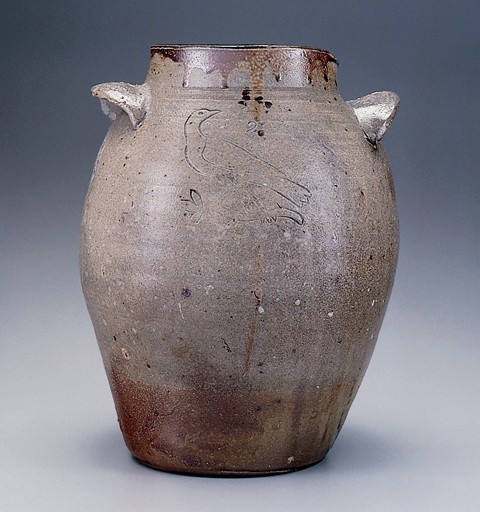
Reverse side of the jar illustrated in fig. 1.
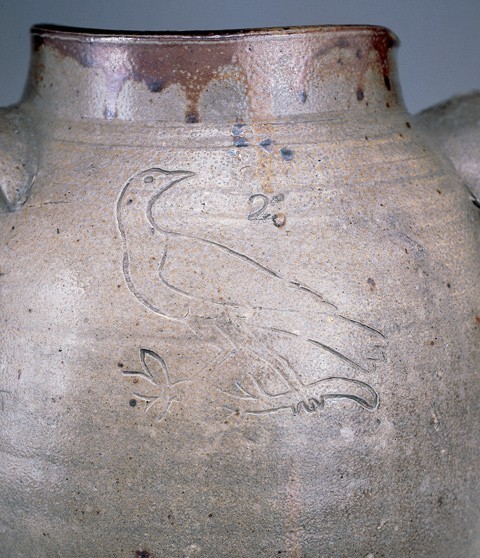
Detail of the stamped bird on branch illustrated in fig. 2.
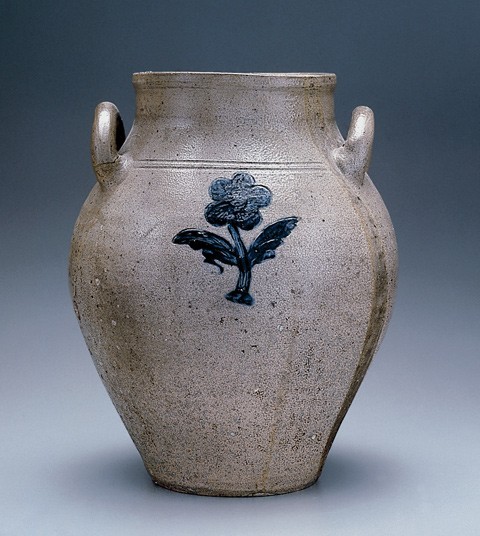
Jar, attributed to Jonathan Fenton, Boston, Massachusetts, ca. 1794–1797. H. 13". Salt-glazed stoneware
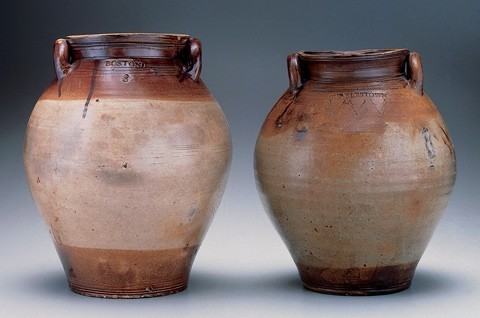
Jars, attributed to Frederick Carpenter, Boston/Charlestown, Massachusetts, ca. 1810. Salt-glazed stoneware with iron or ochre wash. H. 14 1/4" and 13".
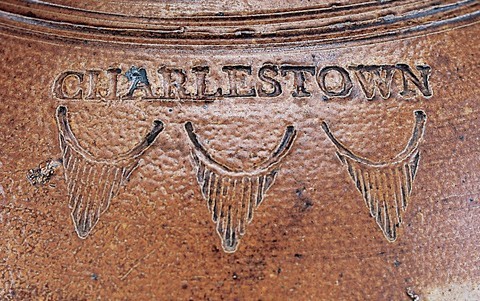
Impressed Charleston stamp from the jar shown on the right in fig. 6.
The ovoid shape of the dusty stoneware pot on the table seemed at odds with the eclectic assemblage of mostly twentieth-century “antiques” offered at a recent Kentucky flea market. A quick turn of the jar confirmed the incongruities of time and place, revealing the presence of two very unusual stamped designs, as well as a rarely seen maker’s mark belonging to one of New England’s earliest and most talented potters, William Pecker (figs. 1-4).
The discovery of this decorated piece of stoneware is all the more surprising given that Pecker is best known for the redware vessels he produced as early as 1784 in Amesbury and West Amesbury, Massachusetts. In fact, in Early New England Potters and Their Wares, Lura Woodside Watkins focuses solely on Pecker’s redware production without a mention of stoneware manufacture. Watkins described his redware as being “beautiful” with “delightful rosy tones accented by brushings of dark glaze.”[1]
The stamped motifs on the Pecker stoneware jar are reminiscent of stamped designs seen on stoneware vessels attributed to Boston and Charlestown potters Jonathan Fenton and Frederick Carpenter. Notably, the distinctive floral pattern on the Pecker jar is comparable to a five-petaled flower design used by Fenton (fig. 5). Further, all three potters—Pecker, Fenton, and Carpenter—stamped their stoneware vessels with highly detailed designs (figs. 6, 7).
Like their European predecessors, American potters relied on stamped designs to provide aesthetically pleasing decorations that could be applied with effciency and economy.[2] However, as with molded, slipped, and incised decorations, the appearance of elaborate stamped designs on early American stoneware vessels is a relatively rare occurrence. Since Pecker chose to decorate this jar with two different designs and also applied a maker’s mark, he may have intended this piece to be somewhat special.
Another notable feature of the Pecker pot is a decidedly slumped rim that probably occurred when stacked wares shifted during a kiln firing. Tragically, William Pecker himself was crushed to death when one of his kilns collapsed on him in 1820.[3] The misshapen appearance of the jar he made and decorated is a tangible reminder of the challenges, as well as the grave physical dangers, involved in operating a stoneware kiln during this period. "
John Kille
Assistant Director
The Lost Towns Archaeology Project
Anne Arundel County, Maryland
<jkille@wam.umd.edu>
<http://www.geocities.com/londontown.geo/>
Lura Woodside Watkins, Early New England Potters and Their Wares (1950; [Hamden, Conn.]: Archon Books, 1968), p. 70.
Donald Blake Webster, Decorated Stoneware Pottery of North America (Rutland, Vt.: Charles E. Tuttle Co., 1971), p. 157.
Watkins, Early New England Potters and Their Wares, p. 70.
